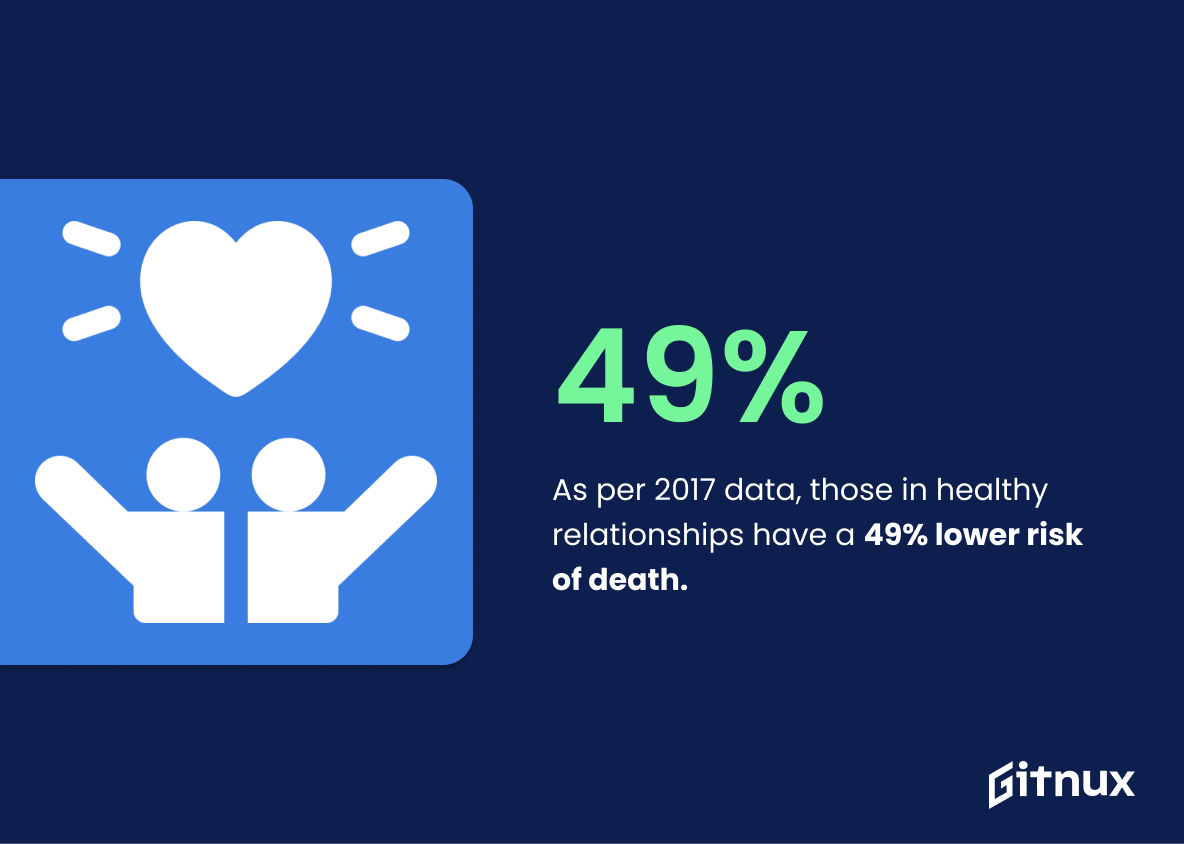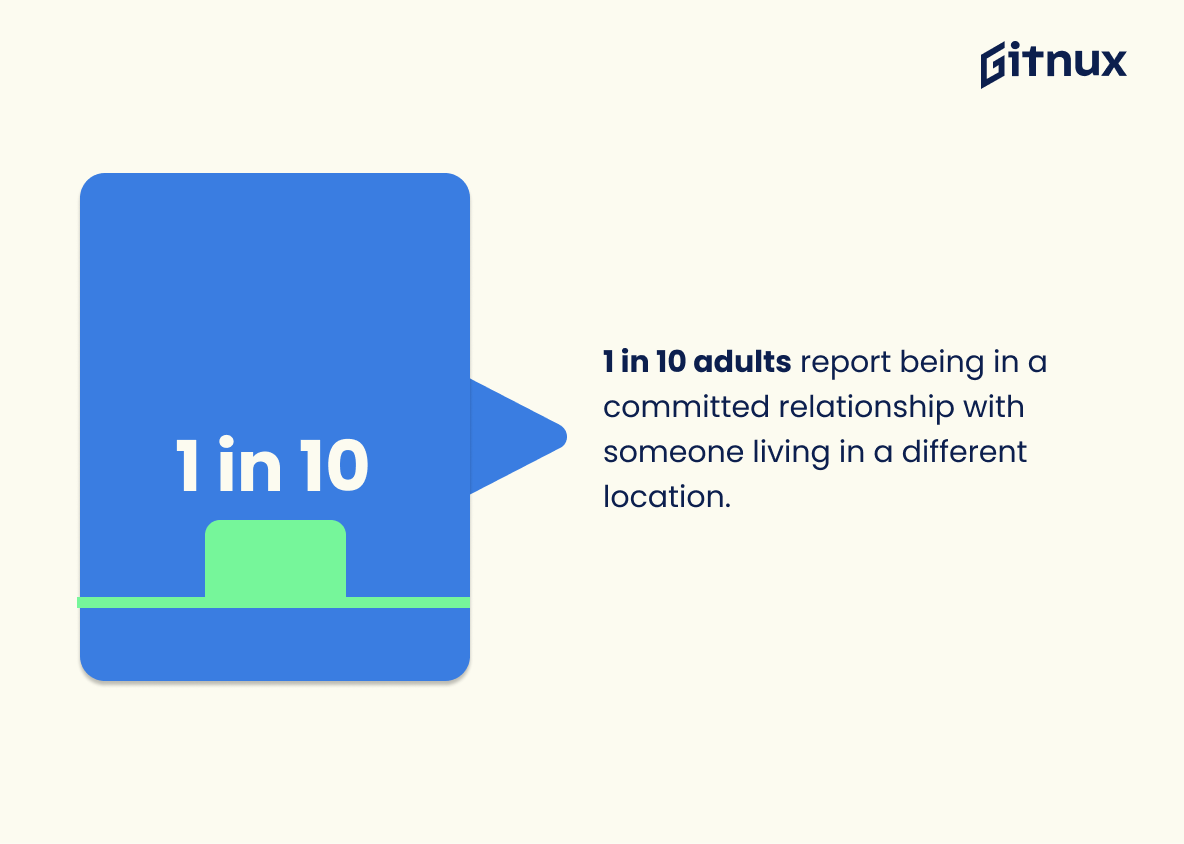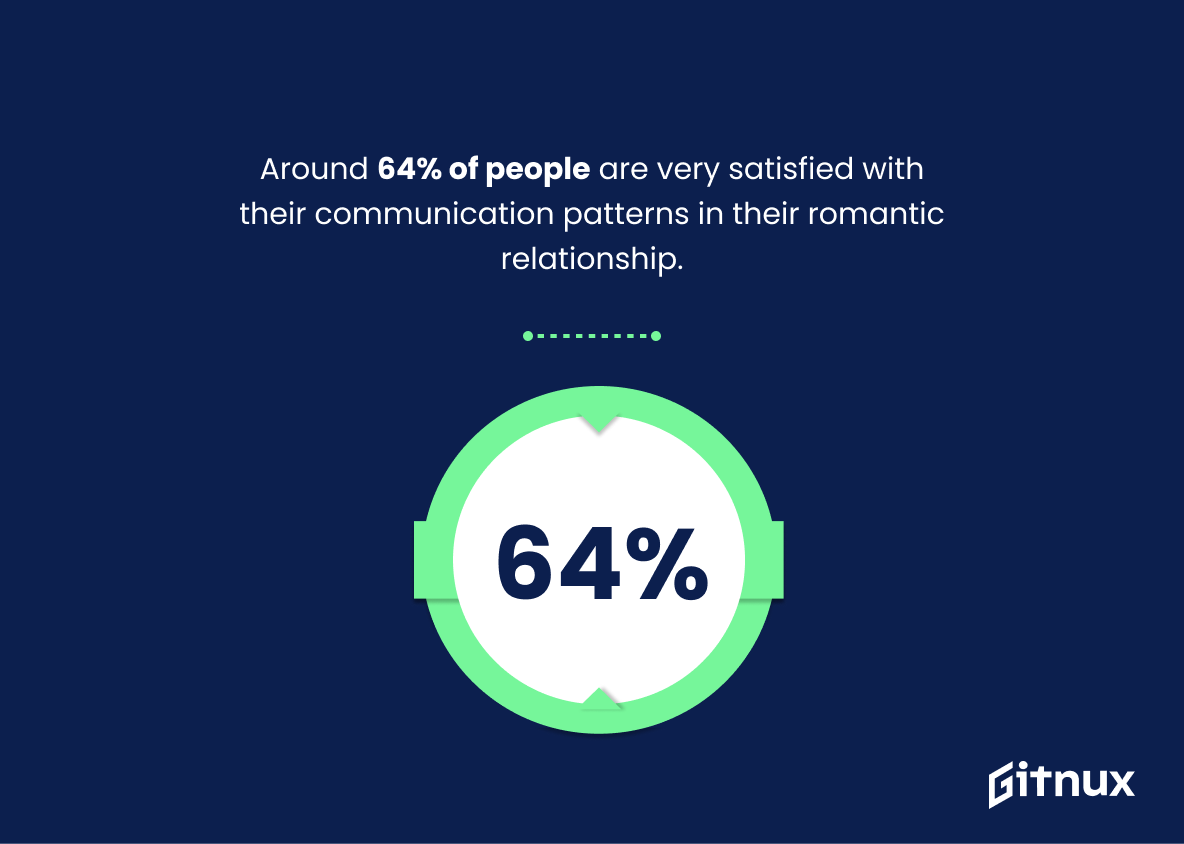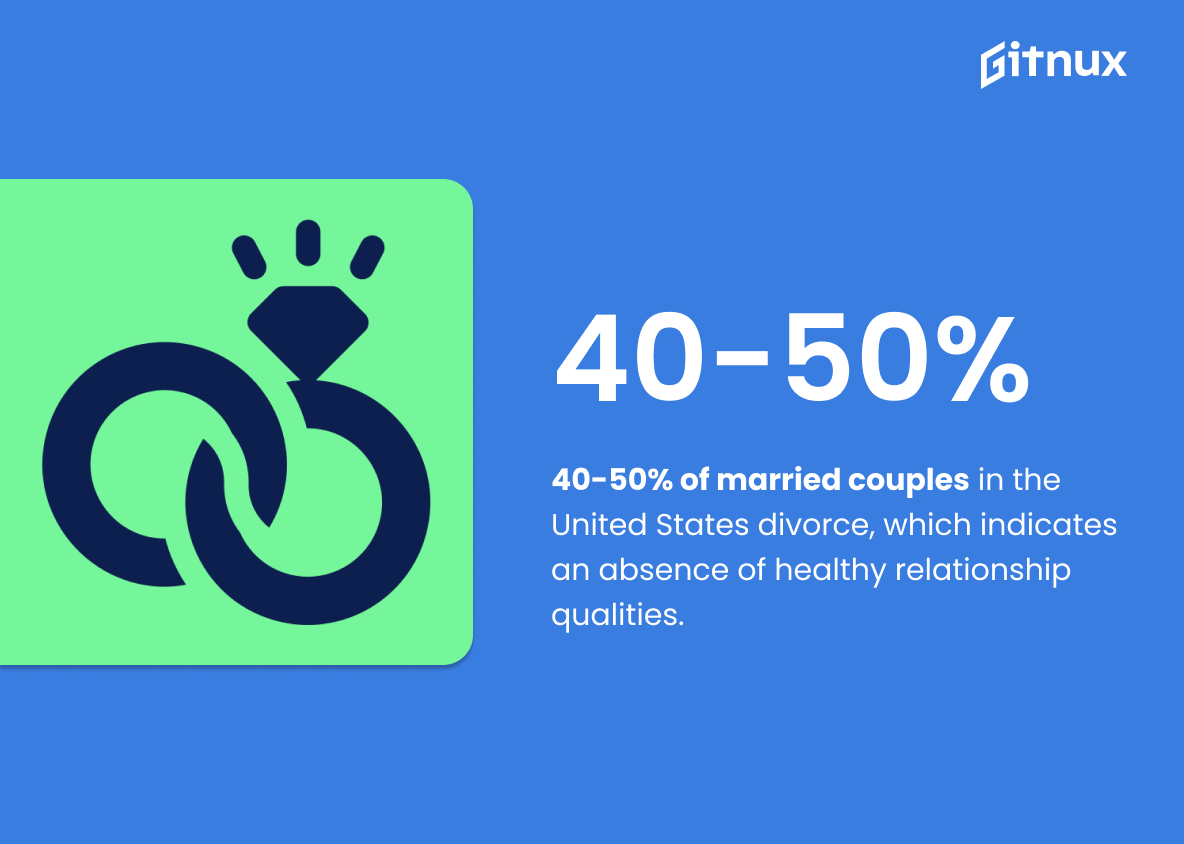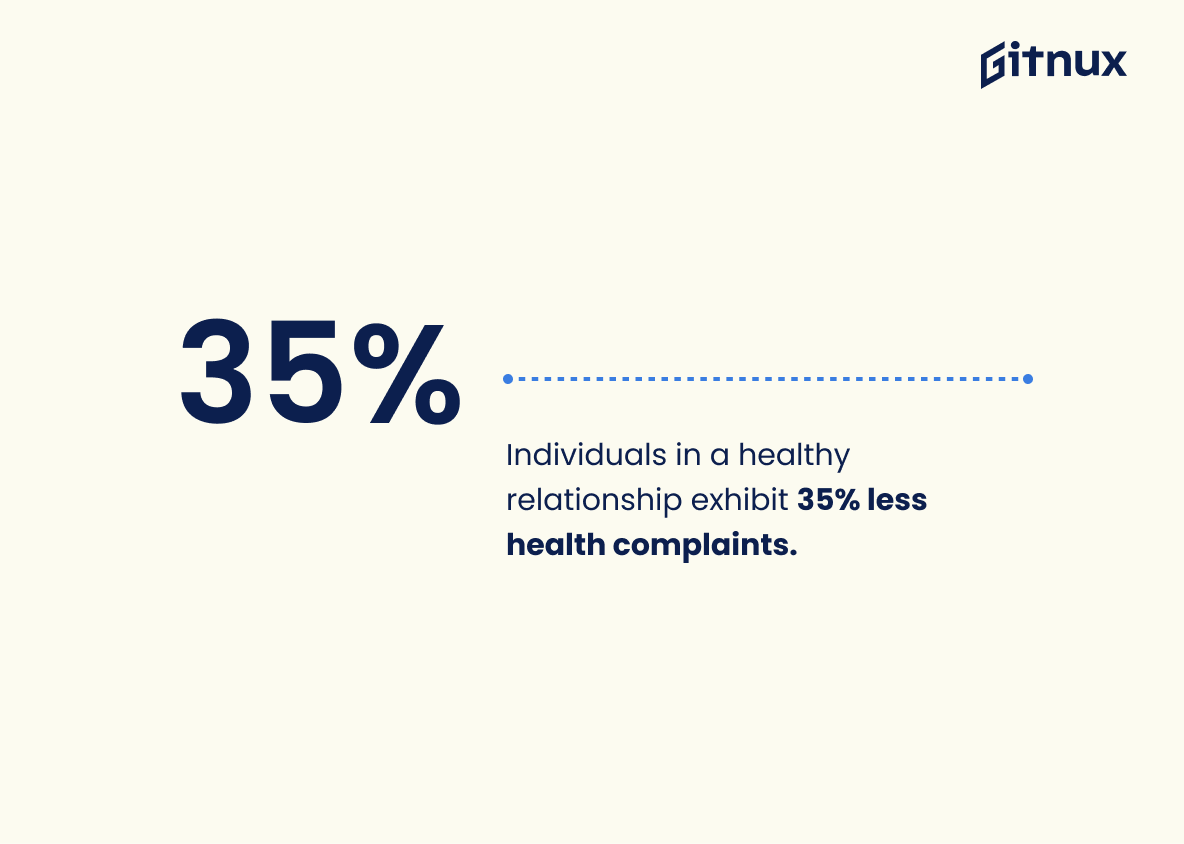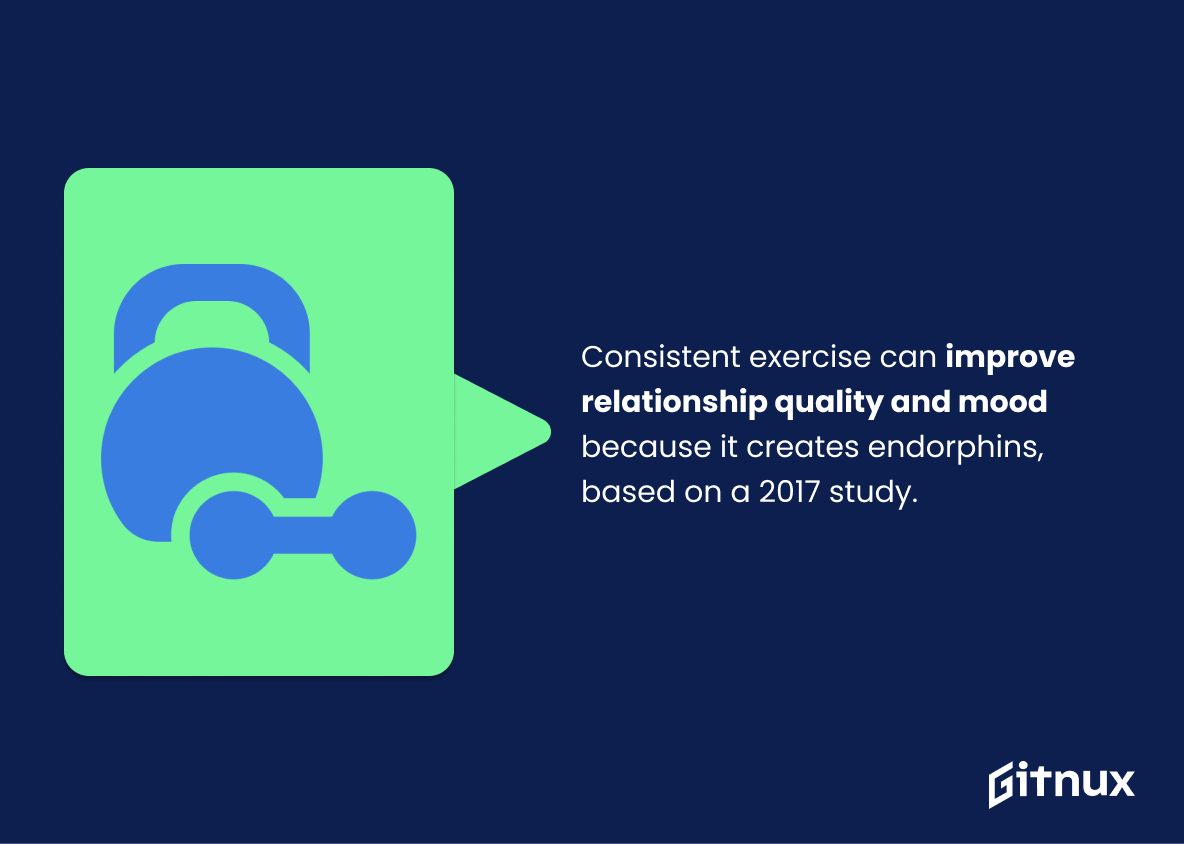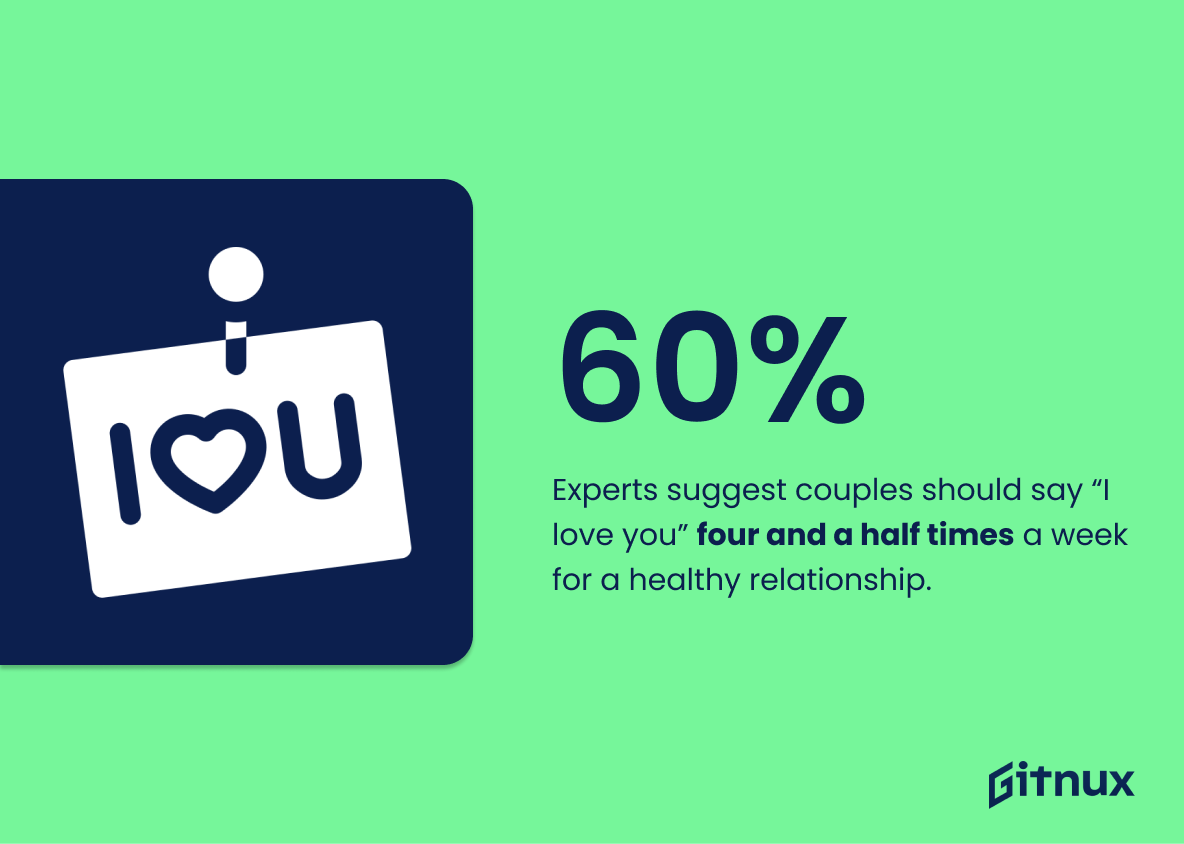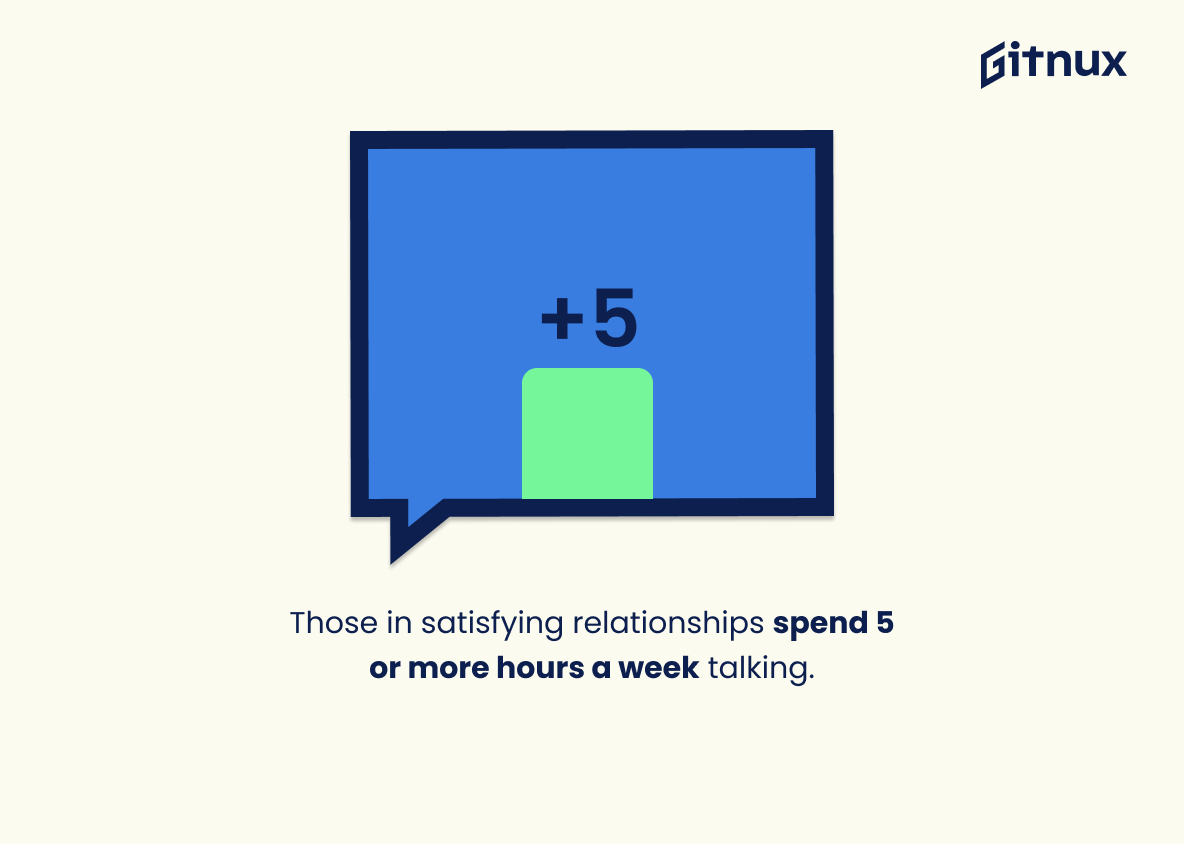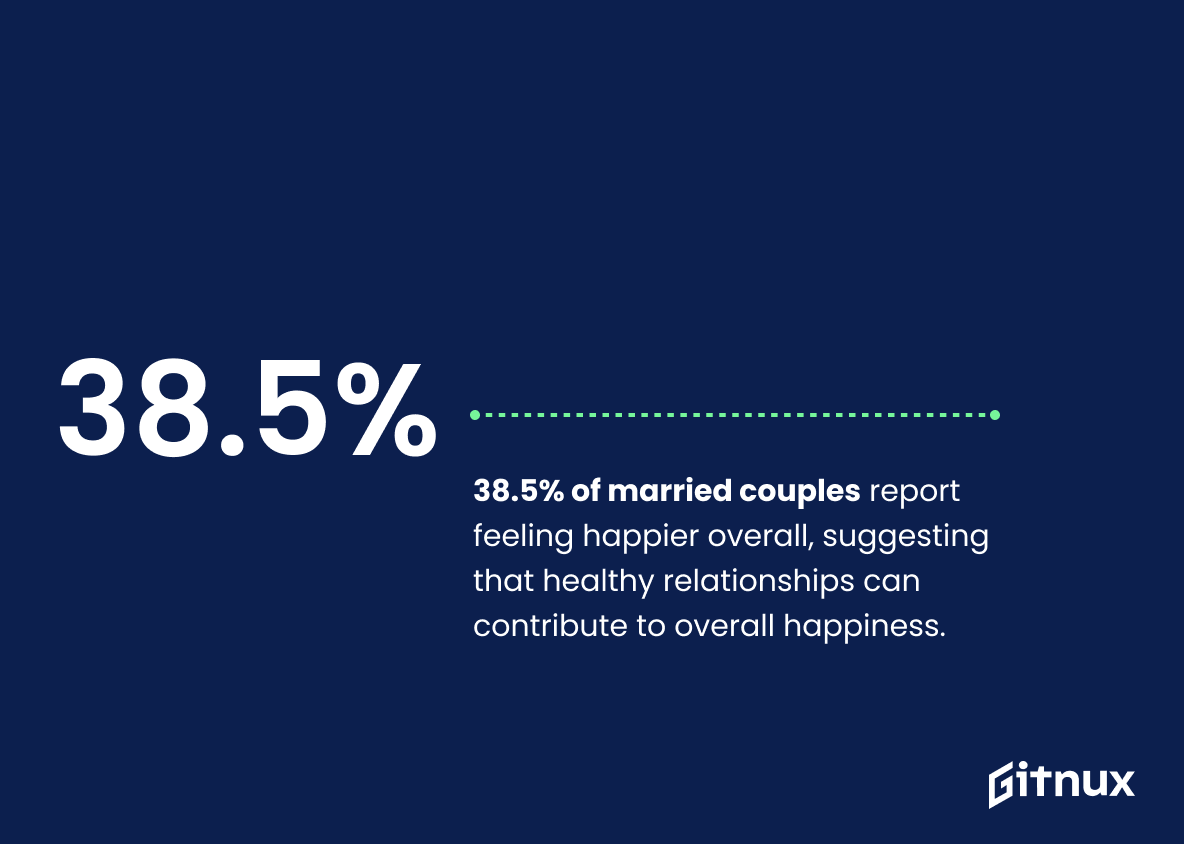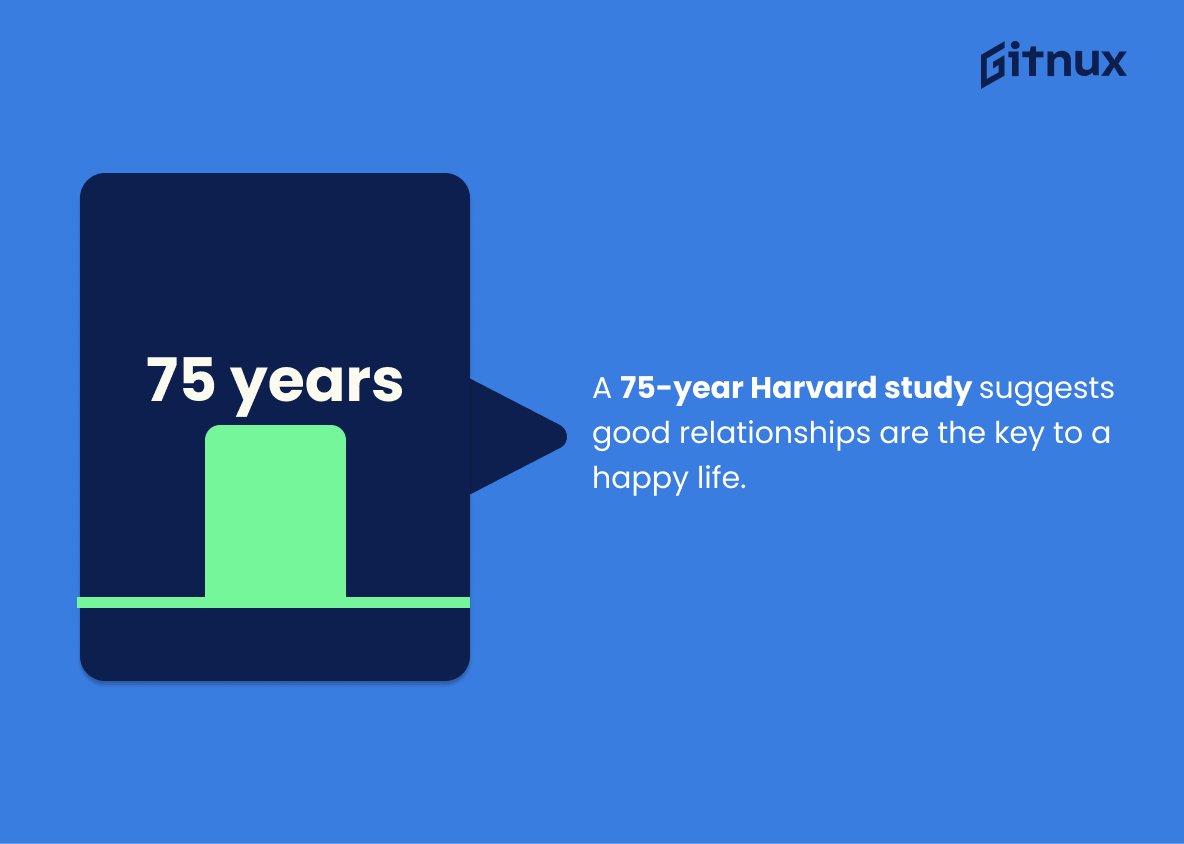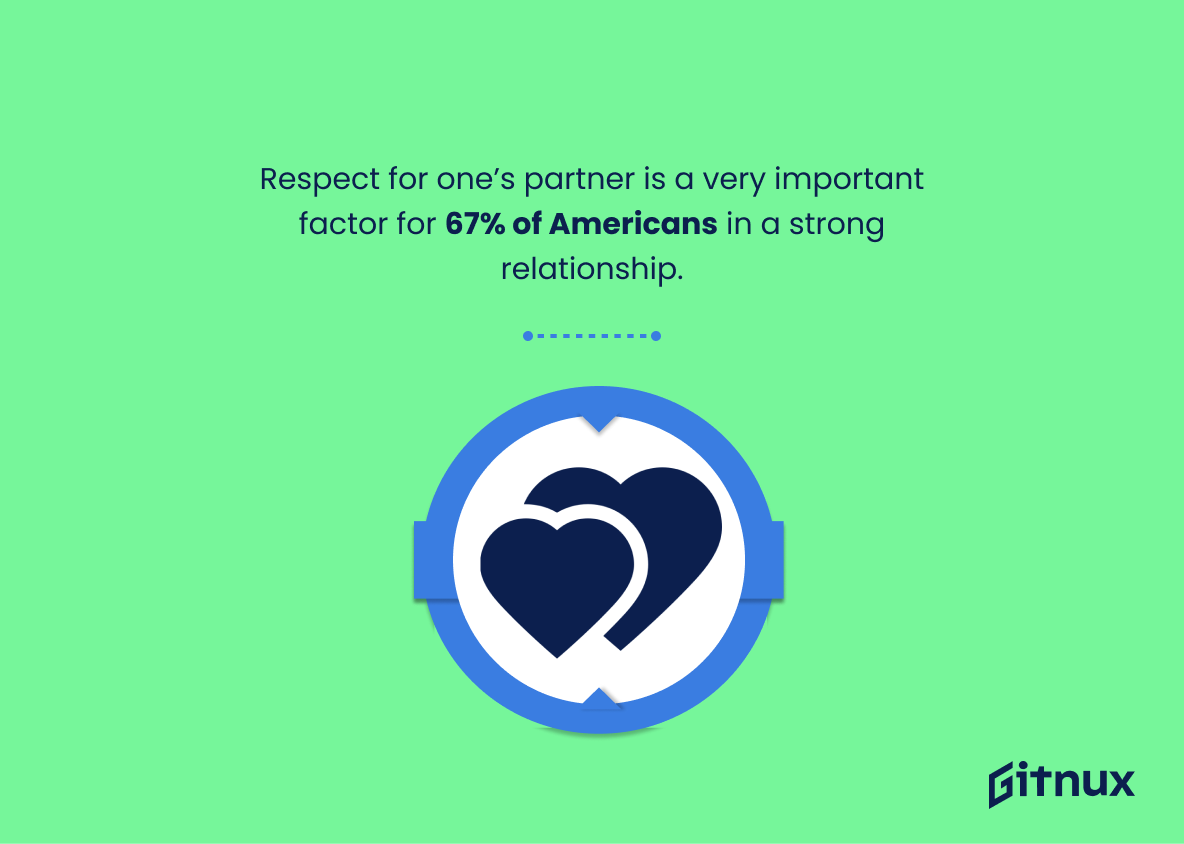In today’s fast-paced world, maintaining meaningful and healthy relationships can sometimes feel like walking on a tightrope. Yet, they’re a fundamental part of our happiness, health and overall wellbeing. What constitutes a healthy relationship, you may ask? Can numbers tell us anything about them? Brace yourself for a deep dive into the invigorating world of healthy relationship statistics.
In this engaging and eye-opening blog post, we unravel the numbers behind strong and fulfilling relationships, sifting through data, studies, and expert insights. These stats are set to offer a new perspective on the way you view and value your interpersonal bonds. Whether you’re in a long-term relationship, nursing a new flame, or single and reading up for the future, there’s something valuable for everyone. So let’s set sail on this voyage of discovery that may help enrich your relationships while debunking a few misconceptions along the way.
The Latest Healthy Relationship Statistics Unveiled
As per 2017 data, those in healthy relationships have a 49% lower risk of death.
Highlighting this compelling 2017 statistic enriches our understanding of the potent link between healthy relationships and longer lifespan. It lends significant weight to the conversation around the integral role that fulfilling relationships play in our overall well-being, not just emotionally but also physiologically.
Additionally, it serves as a powerful testimony to the pervasive influence of healthy connections on life expectancy, inherently urging readers to invest more in cultivating and maintaining quality relationships. Thus, it not only engages readers’ interest in the subject matter but also positions them to better appreciate the profound benefits of being in a healthy relationship, promoting both longevity and improved quality of life.
34% percent of singles have had sex before a first date, while 48% of people in relationships wait to be exclusive.
Unraveling the tapestry of modern relationships, the cited statistic threads an intriguing pattern. Positioned in the spotlight of healthy relationship statistics, it lends a stage to deeper discussions about emotional intimacy and physical connection. With 34% of singles getting physically intimate before even the first date, it alters commonly held preconceptions and prompts one to ponder upon where we are setting the benchmarks for relationships in the contemporary world.
Meanwhile, the fortifying 48% of couples choosing to wait until exclusivity paints a different picture. It demonstrates a focus on emotional bonding and trust-building before taking the relationship to a more intimate level. This dichotomy opens up avenues for debates on the pacing of a partnership, trust dynamics, and the equilibrium between emotional and physical intimacy in modern relationships. Thus, on the canvas of healthy relationship statistics, this information is akin to bold strokes of a painter, challenging the observer to refocus their lens on the evolving landscapes of love, intimacy and commitment.
Approximately 60% of people report that they are happy in their relationship.
Delving into the heartbeat of Healthy Relationship Statistics, illuminating insights can be drawn from the leading light – the thread of joy woven by approximately 60% of individuals proclaiming contentment in their romantic bonds. No less than a sound mirror reflecting the euphoric realities of flourishing relationships, this statistical thread reinforces the narrative of happy couples, acting as a fulcrum that balances tales of relationship satisfaction and discontentment.
This melody of numbers not only fuels optimism for readers about the potential of sustained happiness within relationships, but also subtly amplifies the importance of cultivating profound bonds paving the path for rewarding romantic engagements.
1 in 10 adults report being in a committed relationship with someone living in a different location.
In the vibrant tapestry of healthy relationship statistics, the thread that captures ‘1 in 10 adults report being in a committed relationship with someone living in a different location,’ serves as an enlightening streak of revelation. It challenges the conventional wisdom that proximity is a vital ingredient for a thriving relationship. This key insight propels the discourse beyond physical boundaries, illuminating the resilience of these couples in managing the complexities of geography and time zones.
Emphasizing on the importance of communication, trust, and flexibility, this statistic offers a window into the realm of long-distance relationships, thereby enriching our understanding of the diverse dynamics within these modern-day love stories. Essentially, it uncovers the fact that healthy relationships can bloom even across miles, exuding the potential of human bonds to transcend spatial constraints.
Around 64% of people are very satisfied with their communication patterns in their romantic relationship.
Diving deep into the essence of healthy relationships, the above statistic indeed shines a ray of enlightenment. With an impressive score of 64% people expressing high satisfaction with their communication patterns in romantic relationships, it amplifies the role of open and honest conversation in maintaining the relationship’s health and longevity. It underscores that the foundation stone of a robust relationship discourse is, indeed, proficient communication, which often shapes the dynamics of the interaction between partners.
This statistic, then, not simply serves as an index of gratified couples, but also acts as a roadmap for those aspiring to elevate their romantic relationships to thriving echelons of satisfaction and understanding. Furthermore, it implicitly emphasizes the importance of working on communication skills for individuals intending to enhance their relationship’s quality and strength.
40-50% of married couples in the United States divorce, which indicates an absence of healthy relationship qualities.
A blog post on Healthy Relationship Statistics could certainly leverage the striking statistic that 40-50% of married couples in the United States divorce. These figures provide a potent expression of the challenges inherent in maintaining a healthy, lasting relationship and serve as a stark reminder of the importance of nurturing those valuable qualities that underpin successful relationships.
In unfolding the innate complexities of relationships, these numbers illuminate the gravity of a relationship’s health, enabling readers to delve into the dynamics and factors leading to such high divorce rates. Consequently, the statistic becomes a potent conversation starter, encouraging readers to engage more deeply in the topic and explore the various aspects that contribute to a thriving, recurrently adjusted, and adaptive relationship.
75% of people who marry partners from an affair eventually divorce.
Delving into the realm of relationship fidelity, the statistic holds a significant place. Showcasing the fragile foundations of relationships rooting from infidelity, it indicates that three out of four unions borne out of affairs end in divorce. This serves as a potent reality check for readers frequenting a Healthy Relationship blog, urging the importance of trust, loyalty and honesty.
It subtly underlines the crux of a thriving relationship revolving around virtues beyond mere passion and fleeting attraction. More than just numbers, this statistic is a stark reminder that quality trumps over quick fixes when it comes to relationships, thereby emphasizing the need for solid emotional groundwork and mutual respect.
Individuals in a healthy relationship exhibit 35% less health complaints.
Highlighting the statistic that individuals in a healthy relationship exhibit 35% less health complaints sheds light on the profound interconnectedness of emotional health and physical wellness. It underscores the power of nurturing relationships, seemingly acting as a form of protective shield, leading to healthier individuals.
In essence, within the context of a blog post about healthy relationship statistics, this data point serves as a motivating nugget. It paints a vivid picture of how prioritizing successful relationships could potentially lead to a path of enhanced wellbeing, a statistics-backed motivation for readers to invest more into their relationships.
Consistent exercise can improve relationship quality and mood because it creates endorphins, based on a 2017 study.
Illuminating the intricate relationship between physical health and emotional wellbeing, this captivating 2017 study casts new light on our understanding of relationship quality. It deftly bridges the gap between exercise – a seemingly solitary pursuit – and relational harmony, revealing the unexplored dynamics at play. The hormone endorphin, oft-termed the ‘feel-good hormone’, is not just about personal elation but also influences interpersonal dynamics, as established by this intriguing statistic.
The research underscores the importance of consistent exercise in enhancing relationship quality and uplifting mood, offering a compelling insight that can revolutionize our perception about maintaining healthy relationships. Notably, these findings form a crucial cornerstone for the blog, enriching its narrative on Healthy Relationship Statistics and offering readers an engaging perspective on how routine exercise can act as an unexpected ally in nurturing thriving relationships.
Roughly 65% of happy couples report being in a relationship where their partner is also their best friend.
Drawing from this captivating statistic- around 65% of happy couples profess that their partners double as their best friends- it’s notable to surface the shimmering link between friendship and romantic relationships. In the broad expanse of relationships discourse, genuine friendship forms the bedrock of thriving love connections.
Within the weave of a blog post about Healthy Relationship Statistics, this statistic serves as a significant landmark, guiding readers towards a deeper understanding of the magnitude friendship plays in cultivating long-lasting, healthy relationships. By anchoring on this well-founded rapport, couples can bask in happiness, embrace mutual trust, and foster open-ended communication, which is the lifeblood of jovial and strong relationships.
Experts suggest couples should say “I love you” four and a half times a week for a healthy relationship.
Diving deep into the realm of numbers, we unlock an intriguing revelation; experts illuminate that voicing “I love you” about four and a half times weekly may indeed fortify a relationship’s health. Within the blog post’s context, this statistic serves as a quantitative testimony of love’s concrete impact on relationship wellness.
To unpack this, consider how frequently declaring those three powerful words can enhance emotional intimacy, cementing a foundation of trust and affection. It’s like a compass guiding readers towards a more authentic connection, a modern love language accentuating the importance of vocalizing feelings for one another.
Information like this not only sparks curiosity but manifests as a valuable guide, a relationship manual aiding navigation towards healthier bonds. Moreover, backed by expert opinion, this statistic wields greater credibility, beckoning an acceptance of its importance. It paints a picture, a relational landscape highlighting the correlation between expressing love and relationship robustness.
Those in satisfying relationships spend 5 or more hours a week talking.
Navigating the realm of robust relationships can indeed seem like a cryptic puzzle. Illuminate a corner of this vast enigma with a profound statistic, illustrating a correlation between those in satisfying relationships and the investment of 5 or more hours a week in mutual conversation. This numerical insight into relational dynamics elevates the realization that quality communication is a key catalyst, fueling the engine of a thriving partnership.
It spotlights how time dedicated to verbal interplay is not merely about making value judgments, but rather signifying a commitment to understanding, engaging, and growing together, underscoring the fact that words can indeed weave the tapestry of a fulfilling alliance.
38.5% of married couples report feeling happier overall, suggesting that healthy relationships can contribute to overall happiness.
In the kaleidoscope of healthy relationship statistics, the finding that 38.5% of married couples experience a surge in overall happiness stands out like a beacon. It richly colours the narrative by attesting to the profound emotional upshot of nurturing healthy bonds. By unlocking happier dispositions, these marriages resonate a powerful testament to the incredible benefits and overall well-being accrued from healthy relationships.
The statistical applause, in this case, not just skims the surface but delves deeper, highlighting the interplay of companionship and happiness in our everyday lives. Therefore, anyone reading blogs on relationship statistics would do well to chew over this nugget of wisdom. The potential of a healthy relationship isn’t just about the joy of partnership, but also about the larger impact on our affective state and holistic well-being.
A 75-year Harvard study suggests good relationships are the key to a happy life.
Delving into the obscure depths of a 75-year Harvard research study we stumble upon an intriguing nugget of wisdom. It gleams brightly with the suggestion that the prime ingredient to the recipe of a joyful life revolves around cultivating good relationships. This precious gem of information elevates the discourse in a blog centered on healthy relationship statistics, and here’s why.
Traditionally, people instinctively view physical well-being or amassing wealth as the cornerstones of a fulfilling existence. By swinging the spotlight onto the robust correlations observed between quality relationships and happiness, this study compellingly rearranges the block of priorities. It offers a profound and counterintuitive perspective that reverberates through the fundamental elements that shape our existence.
In the hustle-bustle of this fast-paced world, the value of quality interpersonal relationships often gets sidestepped. Yet, the longevity of this Harvard study not only grabs attention but infuses deep credibility into its findings. While serving as a wake-up call, it injects timely reminders for readers to invest efforts in forging positive relationships, as it forms an underlying fabric that weaves together a life of happiness.
This study also aptly expands the blog post reference base, adds meat to the discussion bones, and shapes a wholesome view on the relationship landscape. It encourages engaged and open-minded readers to ponder over the quality of their relationships while nudging healthier choices, ultimately contributing to the overall goal of the blog – to highlight the significance of nurturing positive relationships to foster a healthy, happy existence.
Respect for one’s partner is a very important factor for 67% of Americans in a strong relationship.
Illuminating the essence of loving relationships, this valuable statistic divulges that a significant 67% of Americans in solid relationships value respect for their partner above all else. This fact, in the landscape of a blog post on Healthy Relationship Statistics, supplies insightful texture by underlining respect as a cornerstone for successful, long-term connections.
It compels readers to mull over the significance of respecting a partner in their own relationships and emphasizes the high probability of thriving connections when this attribute is existent. This statistic introduces an angle for robust discussions, offering palpable data to underline the prominent role of mutual respect in fostering relationship health and satisfaction.
Conclusion
To summarize, healthy relationship statistics show us the integral role that good communication, respect, and equal partnership play in maintaining a thriving relationship. It reinforces the importance of emotional support, trust, and understanding in establishing successful, lasting bonds.
These statistics also remind us that it is perfectly normal to experience occasional conflicts, but it is the way we handle and resolve these disagreements that genuinely counts. Ultimately, every relationship is unique. However, the universal truths highlighted through these statistics offer us valuable insights and guidelines to nurture and foster our relationships towards health and happiness.
References
0. – https://www.www.businessinsider.com
1. – https://www.www.psychologytoday.com
2. – https://www.www.apa.org
3. – https://www.www.ncbi.nlm.nih.gov
4. – https://www.www.singlesinamerica.com
5. – https://www.www.statista.com
6. – https://www.www.glamour.com
7. – https://www.ifstudies.org
8. – https://www.www.huffpost.com
9. – https://www.www.elitedaily.com
10. – https://www.www.pewresearch.org
11. – https://www.journals.plos.org
